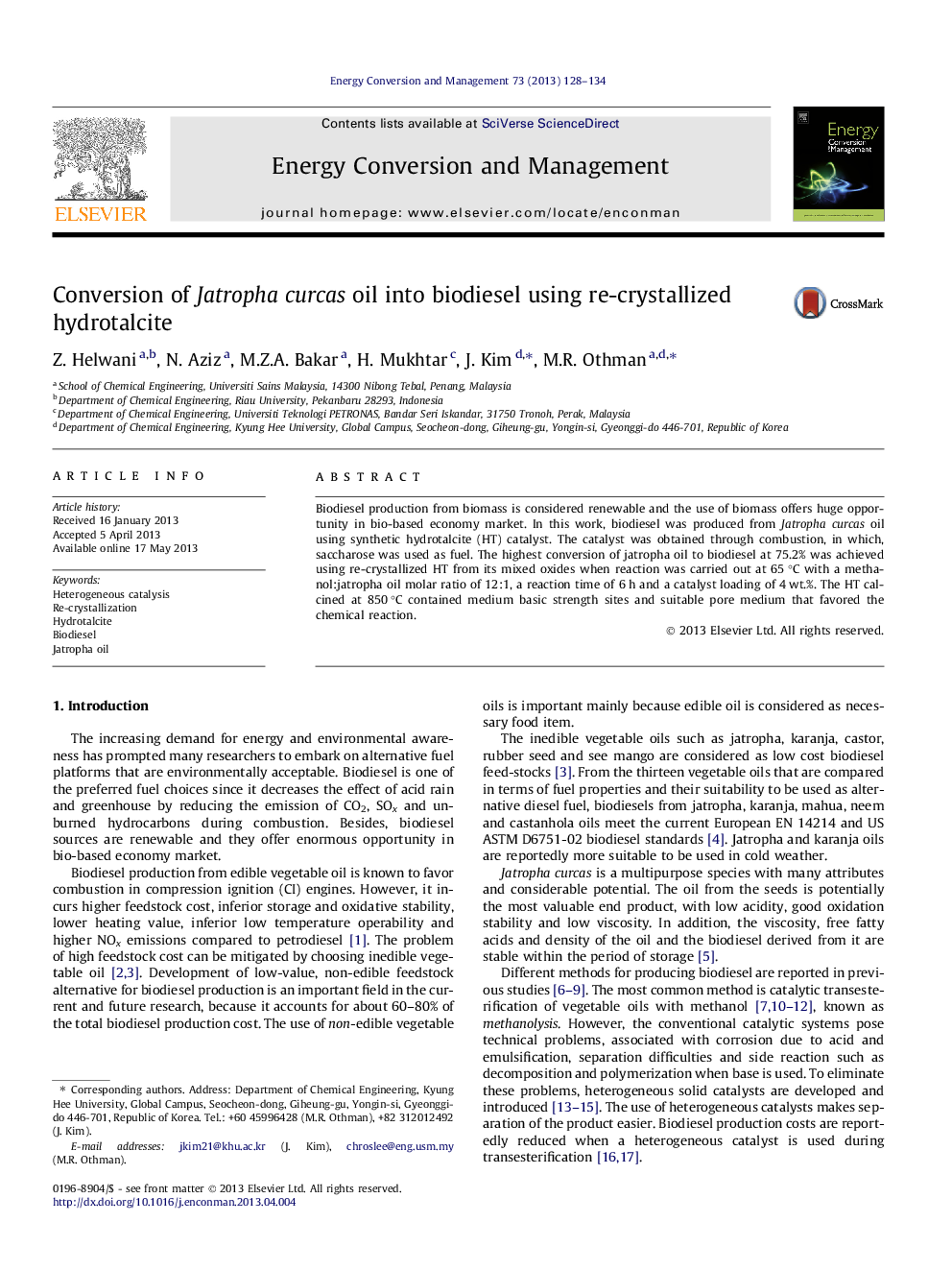| Article ID | Journal | Published Year | Pages | File Type |
|---|---|---|---|---|
| 764245 | Energy Conversion and Management | 2013 | 7 Pages |
•Synthetic hydrotalcite (HT) was prepared from combustion method.•The sample was able to re-crystallize despite being exposed to high temperature.•HT catalyst promoted conversion of Jatropha curcas oil into biodiesel.•Conversion of 75.2% was achieved with promising conditions.
Biodiesel production from biomass is considered renewable and the use of biomass offers huge opportunity in bio-based economy market. In this work, biodiesel was produced from Jatropha curcas oil using synthetic hydrotalcite (HT) catalyst. The catalyst was obtained through combustion, in which, saccharose was used as fuel. The highest conversion of jatropha oil to biodiesel at 75.2% was achieved using re-crystallized HT from its mixed oxides when reaction was carried out at 65 °C with a methanol:jatropha oil molar ratio of 12:1, a reaction time of 6 h and a catalyst loading of 4 wt.%. The HT calcined at 850 °C contained medium basic strength sites and suitable pore medium that favored the chemical reaction.
Graphical abstractXRD pattern of a mixed oxide and re-crystallized hydrotalcite after contacting with carbonate solution. The sample re-crystallized despite being exposed to high temperature. The increased crystallinity at higher calcination temperature was due to aluminum progressively incorporated into the MgO network. At low temperature, aluminum diffused slowly and did not reach the crystallite core. XRD pattern of (a) mixed oxide at 450 °C, (b) hydrotalcite at 450 °C (c) hydrotalcite at 650 °C and (d) hydrotalcite at 850 °C.Figure optionsDownload full-size imageDownload as PowerPoint slide
